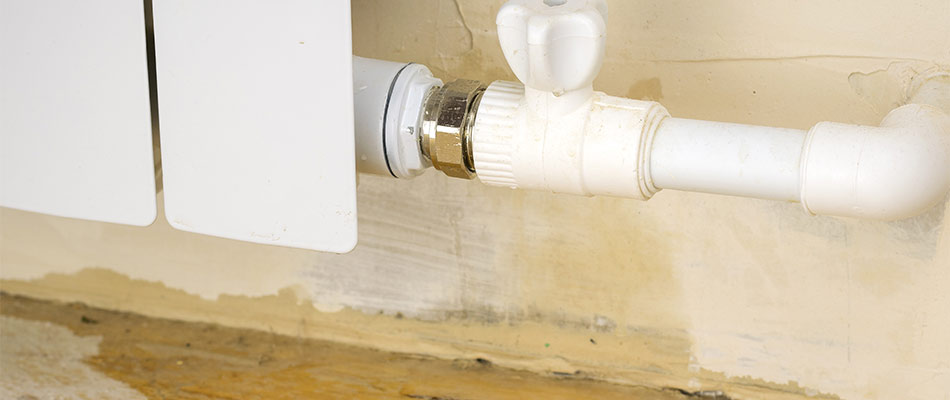6 Ways to Locate Concealed Water Leakages in Your Home
6 Ways to Locate Concealed Water Leakages in Your Home
Blog Article
This post below in relation to Top leak detection hacks is rather engaging. Don't miss out on it.

Early detection of leaking water lines can mitigate a possible disaster. Some tiny water leakages might not be visible.
1. Examine the Water Meter
Every house has a water meter. Examining it is a proven manner in which assists you discover leakages. For beginners, turn off all the water resources. Make sure no person will flush, utilize the faucet, shower, run the cleaning maker or dishwasher. From there, go to the meter as well as watch if it will transform. Since nobody is using it, there ought to be no motions. That indicates a fast-moving leak if it relocates. Also, if you discover no changes, wait a hr or more and examine back again. This means you might have a slow-moving leakage that might even be underground.
2. Inspect Water Consumption
If you spot unexpected adjustments, despite your intake being the exact same, it implies that you have leakages in your plumbing system. An unexpected spike in your bill shows a fast-moving leakage.
A steady increase every month, even with the very same behaviors, reveals you have a slow leak that's additionally slowly rising. Call a plumber to extensively check your property, especially if you really feel a warm location on your floor with piping underneath.
3. Do a Food Coloring Test
When it comes to water consumption, 30% comes from commodes. If the shade somehow infiltrates your dish throughout that time without flushing, there's a leak between the tank and also bowl.
4. Asses Exterior Lines
Don't fail to remember to examine your outside water lines too. Examination spigots by affixing a garden hose pipe. Must water seep out of the link, you have a loose rubber gasket. Change this and make sure all connections are tight. If you have actually obtained an automatic sprinkler, it will help get it properly analyzed and also maintained yearly. One small leakage can throw away lots of water as well as increase your water expense.
5. Examine and also Examine the Scenario
Property owners ought to make it a habit to inspect under the sink counters as well as even inside closets for any kind of bad odor or mold and mildew growth. These 2 warnings indicate a leak so prompt focus is required. Doing routine assessments, also bi-annually, can save you from a significant trouble.
Examine for stainings and deteriorating as the majority of pipes and appliances have a life span. If you think dripping water lines in your plumbing system, don't wait for it to rise.
Early detection of dripping water lines can mitigate a possible calamity. Some tiny water leakages might not be noticeable. Examining it is a surefire means that helps you uncover leakages. One little leakage can throw away bunches of water as well as surge your water expense.
If you presume dripping water lines in your plumbing system, do not wait for it to intensify.
WARNING SIGNS OF WATER LEAKAGE BEHIND THE WALL
PERSISTENT MUSTY ODORS
As water slowly drips from a leaky pipe inside the wall, flooring and sheetrock stay damp and develop an odor similar to wet cardboard. It generates a musty smell that can help you find hidden leaks.
MOLD IN UNUSUAL AREAS
Mold usually grows in wet areas like kitchens, baths and laundry rooms. If you spot the stuff on walls or baseboards in other rooms of the house, it’s a good indicator of undetected water leaks.
STAINS THAT GROW
When mold thrives around a leaky pipe, it sometimes takes hold on the inside surface of the affected wall. A growing stain on otherwise clean sheetrock is often your sign of a hidden plumbing problem.
PEELING OR BUBBLING WALLPAPER / PAINT
This clue is easy to miss in rooms that don’t get much use. When you see wallpaper separating along seams or paint bubbling or flaking off the wall, blame sheetrock that stays wet because of an undetected leak.
BUCKLED CEILINGS AND STAINED FLOORS
If ceilings or floors in bathrooms, kitchens or laundry areas develop structural problems, don’t rule out constant damp inside the walls. Wet sheetrock can affect adjacent framing, flooring and ceilings.
https://www.servicemasterbyzaba.com/blog/how-to-detect-water-leakage-in-walls/

Do you like more info about Leaking water lines? Try to leave a remark down below. We will be glad to know your thoughts about this posting. Hoping that you come back again in the future. You should set aside a second to distribute this blog if you enjoyed it. Bless you for your time. Visit again soon.
Report this page